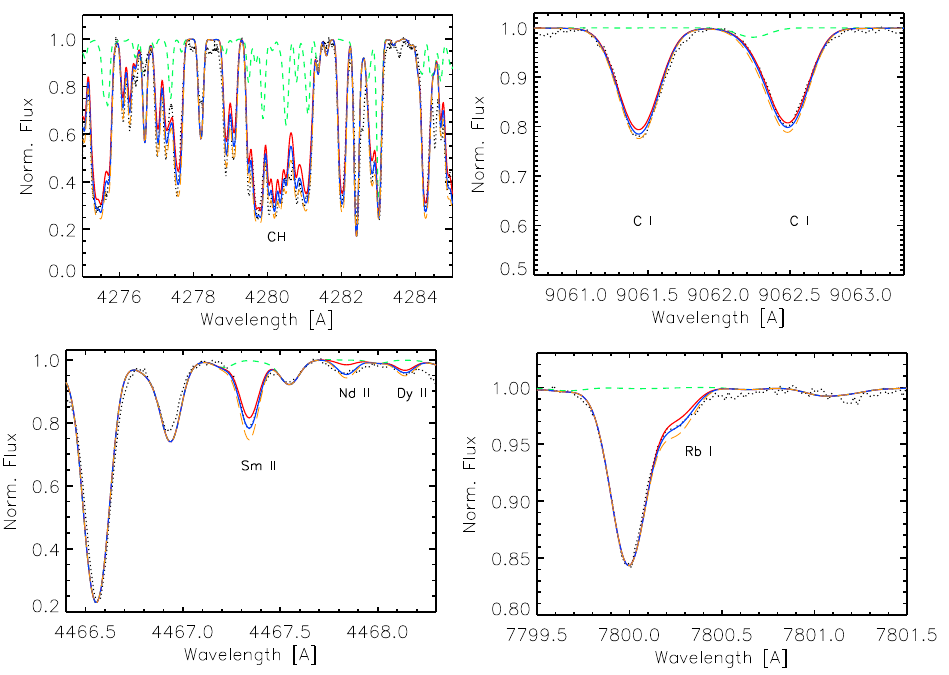A long sought after goal using chemical abundance patterns derived from metal-poor stars is to understand the chemical evolution of the Galaxy and to pin down the nature of the first stars (Pop III). Metal-poor, old, unevolved stars are excellent tracers as they preserve the abundance pattern of the gas from which they were born, and hence they are frequently targeted in chemical tagging studies. Here, we use a sample of 14 metal-poor stars observed with the high-resolution spectrograph called the Potsdam Echelle Polarimetric and Spectroscopic Instrument (PEPSI) at the Large Binocular Telescope (LBT) to derive abundances of 32 elements (34 including upper limits). We present well-sampled abundance patterns for all stars obtained using local thermodynamic equilibrium (LTE) radiative transfer codes and one-dimensional (1D) hydrostatic model atmospheres. However, it is currently well-known that the assumptions of 1D and LTE may hide several issues, thereby introducing biases in our interpretation as to the nature of the first stars and the chemical evolution of the Galaxy. Hence, we use non-LTE (NLTE) and correct the abundances using three-dimensional (3D) model atmospheres to present a physically more reliable pattern. In order to infer the nature of the first stars, we compare unevolved, cool stars, which have been enriched by a single event (‘mono-enriched’), with a set of yield predictions to pin down the mass and energy of the Pop III progenitor. To date, only few bona fide second generation stars that are mono-enriched are known. A simple χ 2 -fit may bias our inferred mass and energy just as much as the simple 1D LTE abundance pattern, and we therefore carried out our study with an improved fitting technique considering dilution and mixing. Our sample presents Carbon Enhanced Metal-Poor (CEMP) stars, some of which are promising bona fide second generation (mono-enriched) stars. The unevolved, dwarf BD+09_2190 shows a mono-enriched signature which, combined with kinematical data, indicates that it moves in the outer halo and likely has been accreted onto the Milky Way early on. The Pop III progenitor was likely of 25.5 M and 0.6 foe (0.6 1051 erg) in LTE and 19.2 M and 1.5 foe in NLTE, respectively. Finally, we explore the predominant donor and formation site of the rapid and slow neutron-capture elements.

Read more: Hansen et al. 2020, A&A, 643A, 49, in arXiv
